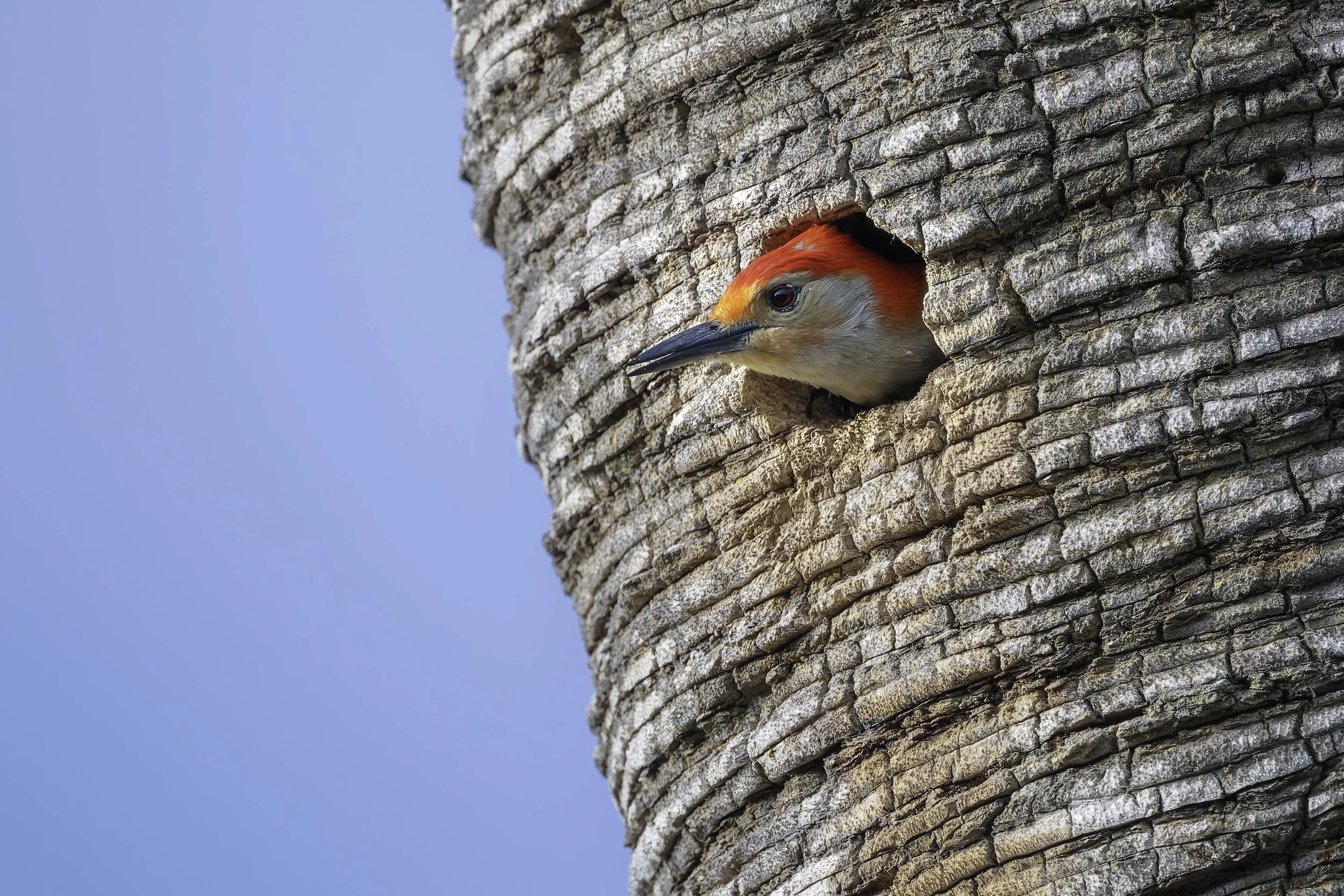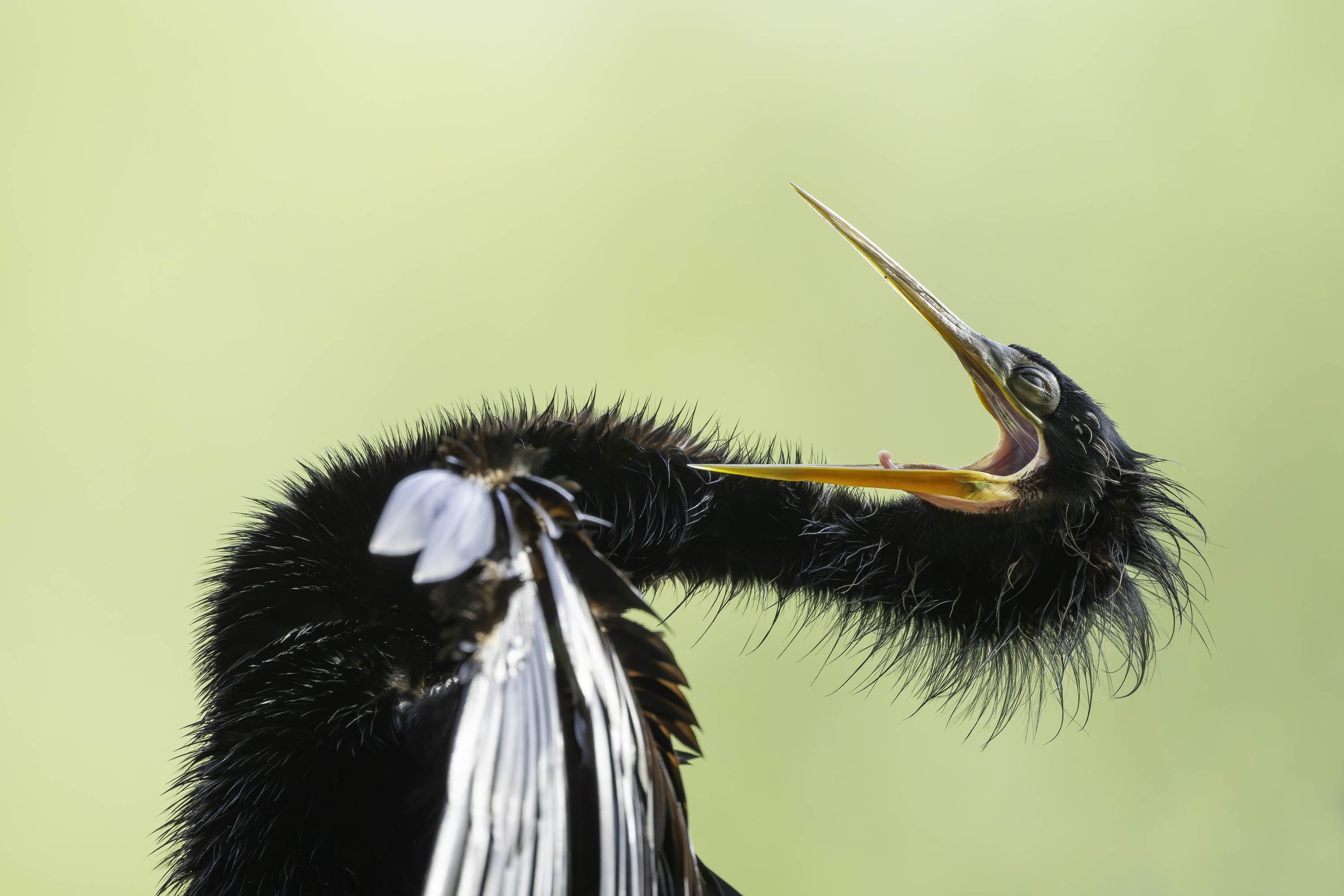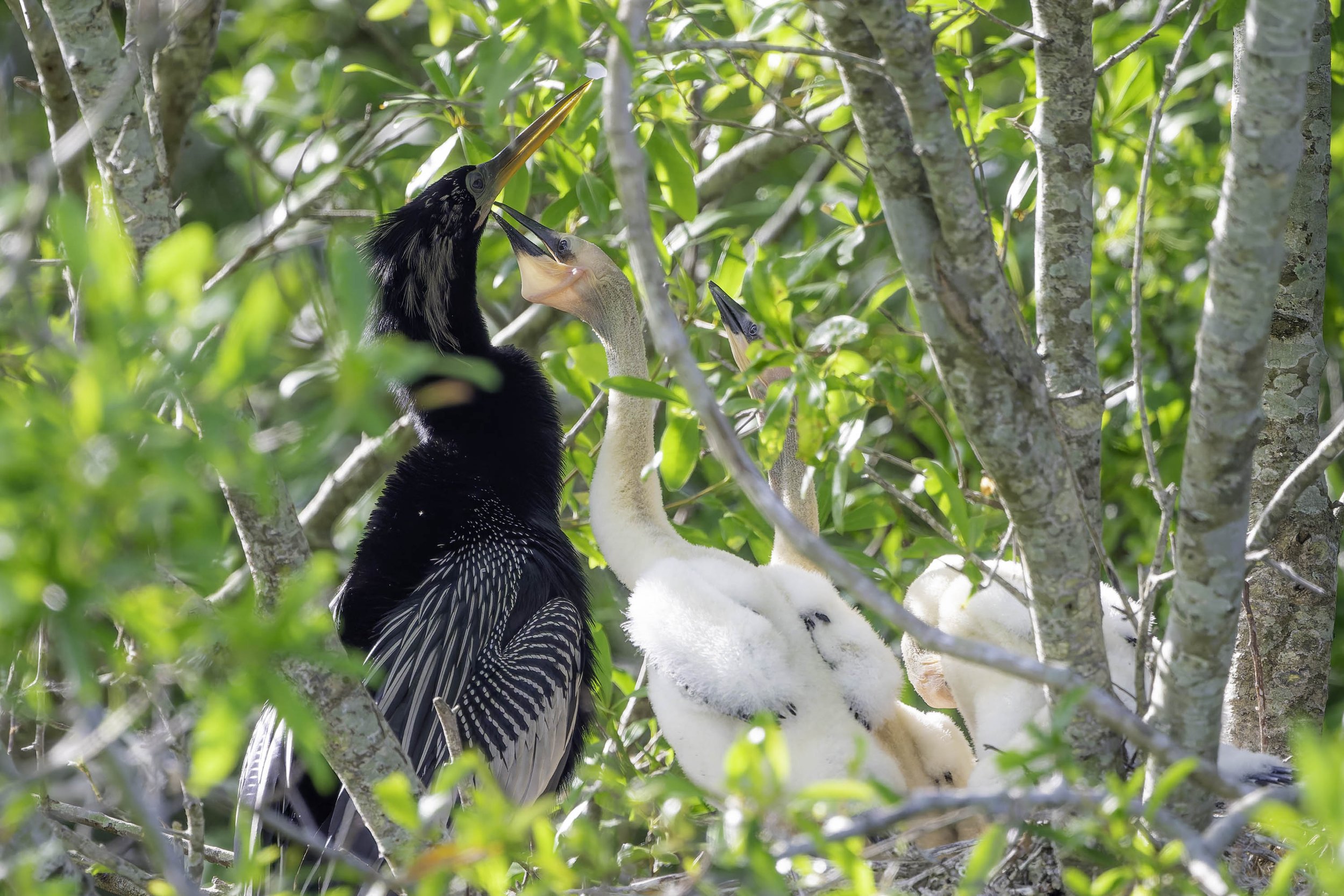Getting Unique Looks
Sunday morning I visited Circle B Bar Reserve in Lakeland. In addition to the wildly popular Great Horned Owlets nesting in a tree in a parking lot, there were other nesting birds that I wanted to photograph. These included nests for Barred Owls, Anhinga, and Red-shouldered Hawks. I started with the Great Horned Owlets.
They had really grown since my last visit and I was happy to seem them doing well. Other photographers have seen them leave their nest to explore nearby branches, but while I was there they were nestled in for the day. Neither adult was around. One owlet was hidden from view, but it’s sibling was very easy to see.
I have hundreds of shots of this little owlet, probably no different than many made by the hundreds of photographers who have trekked to Circle B to photograph these birds. Most of them show the owlet looking out, either directly at me or at something off in the distance. They all look pretty much the same.
In a situation like this, how do you get your photos to stand out from the crowd? The answer is to show behavior. Photos exhibiting behavior are far more interesting and engaging than portraits where the animal is doing nothing. So how do you get those unique and interesting behavior shots?
First, be there. Just being there is 90% of wildlife photography. And if you have the time, being there until the bird shows interesting behavior.
Second is to be ready to press the shutter button. These moments often happen quickly and you have to be ready.
Third is to understand the unique behavior of the species. Nearly every bird species does something unique so understanding that behavior and the tell tale signs that the bird is about to do something is very helpful. There are many ways to learn about bird behavior, but I will just mention three. First, is good old fashioned field work. You can learn so much by watching a bird from a distance that doesn’t disturb its normal behavior. Second, I recommend allaboutbirds.org and its subscription sister site birdsoftheworld.org. When I want to know more about birds, this is where I go. Third, is joining a birding group like your local Audubon chapter. I am a member of Tampa Audubon and through them I have learned a great deal about birds and their habitats.
Since we know that behavior is a key factor in creating unique bird photos, let’s look at a few I took on this trip to Circle B.
Returning to our little owlet, he (or she) was sitting in the nest preening its feathers. I know from experience watching owls that when an owl runs their feathers through their beak they have a moment where they keep their eyes closed and it looks like they are in sheer bliss (or asleep). That’s what this photo is - post-preening bliss. The photos of it preening its feathers are also unique and interesting, but I chose this one because I felt it was more compelling.
Great Horned Owlet. Post-preening bliss. Nikon Z8 with monopod-mounted Nikkor Z 800mm f/6.3 VR S lens at f/6.3, 1/800 sec, ISO 4000.
While photographing the owlets, I noticed a Red-bellied Woodpecker in a nearby tree. This bird was busy cleaning out a hole. He would stick his head out and through out wood shavings. Now this photo is not very unique. If I had shown a little more patience, I would have gotten photos of him actually throwing out the shavings. You can’t get them right every time.
Red-bellied Woodpecker. Nikon Z8 with monopod-mounted Nikkor Z 800mm f/6.3 VR S lens at f/6.3, 1/1000 sec, ISO 450.
I left the owlets and the woodpecker behind with two other photographers. I walked around the nature center and the parking lot area to check for Painted Buntings which I have seen in this area before, but didn’t see anything other than Northern Cardinals. I took to the trail and made my way to Marsh Rabbit Run.
It was quieter than usually on the trail, especially for spring. The Palm Warblers and Yellow-rumped Warblers that I had seen in great numbers a few weeks ago were largely gone. I did see (and hear) a few Common Gallinule, one Purple Gallinule, three Great Blue Herons, two Little Blue Herons, three Tricolored Herons, a couple of White Ibis, one Glossy Ibis, a Belted Kingfisher, and two Anhingas. That’s a light day at Circle B.
I also saw one Red-shouldered Hawk. He was perched on a downed tree in the shallow canal that runs along the trail. He took just a few minutes to preen and provided me with this unique look.
Red-shouldered Hawk. Nikon Z8 with monopod-mounted Nikkor Z 800mm f/6.3 VR S lens at f/6.3, 1/1250 sec, ISO 500.
Further down the trail I spotted an Anhinga perched on a dead tree with wings spread out to dry. I have to say, Anhingas are fast becoming my new favorite bird. They are so different looking from other birds and they can give you beautiful classic poses one minute, then wacky looks the next minute. When taking the photo below the thought that ran through my head was “this bird looks like a crazy strung-out crackhead.” What other bird can you say that about? Ha!
Anhinga. Nikon Z8 with monopod-mounted Nikkor Z 800mm f/6.3 VR S lens at f/6.3, 1/1600 sec, ISO 1100.
Taking this shot was not easy, especially given this was a perched bird. Anhingas never keep their heads still, constantly wiggling around like a little kid with pent-up energy. I was also shooting so that the light was straight on the birds back and I was on the trail 90 degree to the bird. At times the bird’s eyes were well lit and the autofocus could find the eyes, and at other times the bird’s dark eyes were buried in shade and the autofocus couldn’t find them at alll. Instead, it kept wanting to focus on the white feathers on the wingtips. Despite the technical difficulties, I am really happy with this unique shot of a very unique bird.
At the end of the trail there was an Anhinga nest with three chicks. While they looked absolutely amazing, the nest was obscured by brush and it was impossible to get a clean shot. Still, here is the best look I got.
Anhinga. Nikon Z8 with monopod-mounted Nikkor Z 800mm f/6.3 VR S lens at f/6.3, 1/1600 sec, ISO 1250.
On the way back to my camper van I stopped by the Red-shouldered Hawk nest. This nest is high in the tree and the only time to photograph the chicks is when they come to the edge of the nest. A few very patient photographers have gotten a shot, but in my view the uninteresting photograph wasn’t worth the effort.
I haven’t decided where to go for my next week’s photographic adventure. I am keeping an eye out to see when spring migrants start appearing which should be kicking off in the next couple of weeks. I have also been wanting to run up to Payne’s Prairie to photograph Snail Kites, which has been on my bucket list for some time. This may be the weekend to go do it. We’ll see.
Until then, happy birding!





